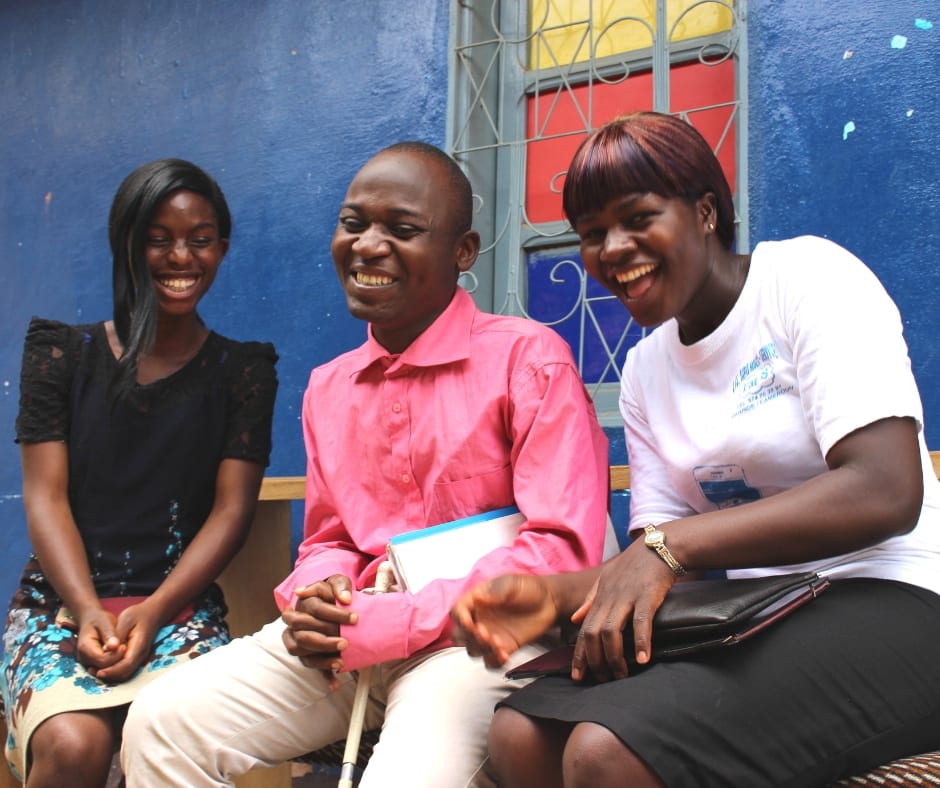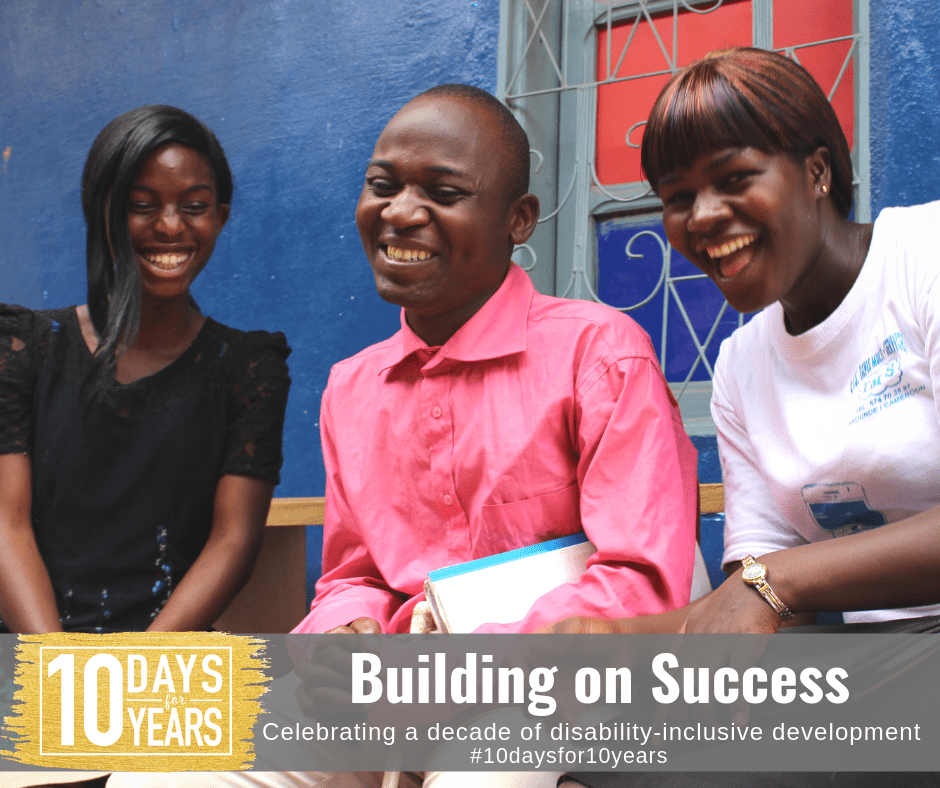Building on Success: The way forward for disability-inclusive development
A decade is a short time in development, but a lifetime in politics. Reflecting on ten years since the introduction of Australia’s original Development for All strategy, the accomplishments have been remarkable. Not only has Australia maintained some bipartisanship within the highly contested and dramatically transformed field of Australian aid, but it has seen this support rapid – and real – global leadership in disability-inclusive development.
In addition to marking ten years of a strategic approach to disability inclusion in Australian aid, 2019 represents one year until the expiry of the current iteration of Development for All.
Crucially, with the up-coming Australian federal election on May 18th, the timing is right to look towards the next decade, examine partisan policies, and examine how Australia can best maintain its leadership and solidarity with people with disabilities around the world.
The Liberal-National Coalition
Although disability-inclusive development did not feature in the Coalition’s 2014 overhaul of high-level Australian aid frameworks, then-Minister for Foreign Affairs the Hon Julie Bishop MP noted that ‘the participation and leadership of people with disability in the aid program remains a key focus.’[1]
Subsequent Ministers have, to varying extents, sought to maintain the prominence of disability inclusion in priority areas such as disaster risk reduction (‘something to which the Australian Government is very committed’[2]). In 2020, inclusion can be expected to emerge as a key theme of the Asia-Pacific Ministerial Conference on Disaster Risk Reduction, to be held in Brisbane in June.
Ahead of the 2019 election, however, the Liberal-National Coalition has been predominantly guided by the positions set out in its 2017 Foreign Policy White Paper. Setting out a wide-ranging approach to the coming decade, the paper makes a number of references to disability-inclusive development. Under the continuing guidance of the white paper, a re-elected Coalition government would:
- Prioritise the inclusion of women and girls and people living with disabilities in its overall focus on poverty reduction and economic participation;
- Continue to promote the rights of people with disabilities through its term on the UN Human Rights Council (until 2020); and
- Focus protection efforts on women and girls and people with disabilities in settings of conflict and natural disaster.[3]
Despite references to a third disability-inclusive development strategy made in the 2018 Office of Development Effectiveness evaluation of Development for All, no political commitment has been made to renewing the strategy beyond 2020.
The Australian Labor Party
In an announcement reminiscent of the establishment of an avoidable blindness initiative ahead of the 2007 federal election, Shadow Minister for Foreign Affairs Senator the Hon Penny Wong used a recent speech to the University of Queensland to announce renewed investment in preventing blindness by treating over 19,000 people with vision impairment in the Pacific.
While critical for preventing ongoing disability, this announcement should be treated as an investment in health, rather than inclusion. No such announcements in disability-inclusive development have been made yet in the 2019 election campaign, some guidance can be found in the Labor Party’s pre-election National Platform.
Though wide-ranging in its approach to domestic and foreign policy, the Platform makes a number of commitments that affirm the ongoing precedence of disability inclusion in a Labor-managed Australian aid program. These include:
- Promoting and protecting the rights of people with disabilities, including through the Convention on the Rights of Persons with Disabilities and improving disability inclusion in Australia’s aid program;
- Recognising ‘the inclusion and empowerment of people with disabilities [as] a fundamental cross-cutting principle of Australia’s international development program’; and
- Ensuring that Australia’s aid program and broader foreign policy promotes human rights, including through appointing a Global Human Rights Ambassador with ‘specific responsibility for the advancement and protection of disability, LGBTIQ, ethnic and religious minority and other human rights.’[4]
Additional detail, including around the introduction of a third Development for All strategy, is scarce, but the commitments in the National Platform provide a foundation to build upon.
An endorsed way forward
Prior to the dissolution of Parliament, the bipartisan Joint Standing Committee on Foreign Affairs, Defence and Trade released the first report of its inquiry into Australia’s aid program in the Indo-Pacific. Existing separately from party structures, the Committee seeks to provide Parliamentary-level investigation of topical foreign policy issues; in this case, the matters of gender equality, private sector development and overall effectiveness in Australia’s approach to international development. Although disability inclusion did not feature in the terms of reference for the inquiry, the Committee made a number of recommendations relevant to the implementation and continuation of Development for All.
In line with the Australian Disability and Development Consortium’s submission to the inquiry, these recommendations included strengthening disability-inclusive data, introducing a strategic target for investment and performance in disability-inclusive development, improving reporting on inclusion in the aid program, and implementing the recommendations of the Office of Development Effectiveness’ evaluation of Development for All.
Following the federal election, an Australian Government under any leader should revisit the recommendations made by the Committee in order to pursue its ongoing leadership in disability-inclusive development, as already endorsed from within the Parliament.
The impact of Australia’s leadership is not abstract. From supporting women with disabilities to achieve financial independence, to facilitating access to much-needed assistive devices, to strengthening systemic access to educational opportunities for learners with disabilities, the Australian aid program’s strategies have made tangible differences in the lives of people around the world.
Though these gains are fundamentally important, they are also fragile. Consistent leadership is required, particularly in Australia’s primary sphere of activity and influence – the Pacific – where disability-inclusive data, access to services and investment in implementing regional disability rights frameworks are scarce. The introduction of a third Development for All strategy forms the next notable step for any Australian Government, whether newly- or re-elected, committed to the rights of people with disabilities living in poverty.

Edwin (center) is a student, pictured here with his friend Blessie and Sandre. He was the first student with visual impairment enrolled in the mainstream secondary school in his town in Cameroon. Edwin’s school was resourced to adopt disability inclusive practices through the Socio-Economic Empowerment of People with Disability (SEEPD) program supported by CBM Australia with Australian Government ANCP funding. Across four years, SEEPD provided disability inclusive resources and training to 17 government primary and secondary schools across Cameroon. Edwin has now graduated high school with top marks and is studying journalism. Copyright: CBM Australia
Thank you to all our ADDC partners that have contributed to the 10 days for 10 years series: CBM Australia, Motivation Australia, World Vision Australia, International Women’s Development Agency, Vanuatu Disability Promotion and Advocacy Association, TEAR Australia, Save the Children, Australian Volunteers International, Water Aid Australia and Good Return.
References
[1] Minister for Foreign Affairs, 25 May 2015. Launch of Disability-Inclusive Development Strategy for Australia’s aid program. Available from foreignminister.gov.au/speeches/Pages/2015/jb_sp_150525.aspx?w=tb1CaGpkPX%2FlS0K%2Bg9ZKEg%3D%3D.
[2] Minister for International Development and the Pacific, 4 July 2018. Opening and closing remarks to thematic event: Disaster Risk Reduction in Action: Gender and Inclusiveness. Available from ministers.dfat.gov.au/fierravanti-wells/speeches/Pages/2018/cf_sp_180704a.aspx?w=p2wUlmE1t7kKl1%2BiOm3gqg%3D%3D.
[3] Australian Government, 2017. 2017 Foreign Policy White Paper. DFAT, Canberra.
[4] Australian Labor Party, 2018. A Fair Go for Australia: National Platform. Available from www.alp.org.au/about/national-platform.
10 days for 10 years
In partnership with CBM Australia and other ADDC partner organisations, the 10 days for 10 years campaign runs from 29 April to 10 May 2019. The campaign is celebrating the achievements in disability-inclusive development (DID) within the Australian aid sector, particularly those led or made possible by Australian aid under the first and second Development for All strategies. Articles will be released daily here on the ADDC website.
Follow the campaign via the hashtag #10daysfor10years and follow @ADDCnews on Twitter, Facebook and LinkedIn.
- 10 days for 10 years
- Day 1 – A Legacy of Leadership
- Day 2 – Beyond the Mainstream
- Day 3 – Inclusion at the Intersection
- Day 4 – Disabled People’s Organisations Leading Change
- Day 5 – Recognising Diversity within Disability
- Day 6 – Reporting from the Shadows
- Day 7 – Volunteering for Inclusion
- Day 8 – Evolution of Inclusion
- Day 9 – Education for All
- Day 10 – Building on Success

